Fri Jun 06 - Written by: Emmanuel
How to Avoid the Hidden Fees of Store Mapping Services
Square sellers who wholesale can save money and stress with a simple retailer page. It will avoid the hidden fees of store mapping services.
If you’re a Square seller who wholesales products, you might be thinking of signing up to one of those store locator services. Please don’t. Unless you’re working with hundreds or thousands of retail partners, they’re not worth it. First, Square doesn’t let you embed the third party code on the website unless you’re on at least the Square Plus plan ($29). Second, most store mapping services have a little secret: they don’t provide the map. You have to bring your own by getting an account at a mapping provider like Google Maps or MapBox. So you will be paying the mapless store mapper and have to keep tabs to make sure you don’t go over the free tier of Google Maps or MapBox. Third, you can do what other high-end boutique brands do, use a simple page that lists your retailers.
What You’re Really Paying For (And What You’re Not)
When you sign up for services like Stockist, StoreMapper, or others, you’re essentially paying for a database and search interface. They don’t provide the interactive map. Most sellers discover this after they’ve signed up and entered in their credit card.
Google Maps and MapBox have generous free tiers and most of the time you won’t go over it. But if you have a spike in traffic, like during the holidays, suddenly the $29/month store mapper you budgeted for becomes $unknown/month (but no less than $29).
Store locators are only worth it if you have:
- Hundreds to thousands of retail partners
- Frequently changing store information
- Customers who need to filter by specific criteria (hours, services, inventory)
- National or international distribution requiring geographic search
Most Square sellers work with 10-50 retail partners whose information rarely changes. The boutique in Portland isn’t moving locations monthly, and your customers don’t need to filter by “stores open past 9 PM” when you have twelve retail partners total.
The Simple Page Approach That Actually Works
High-end boutique brands have figured this out. They use clean, well-organized pages that give customers exactly what they need without the technical overhead.
Akua Objects shows how effective a simple, well-organized list can be with their stockists page. You can do a quick scan to find out if you can pick up one of their “objects” close by.
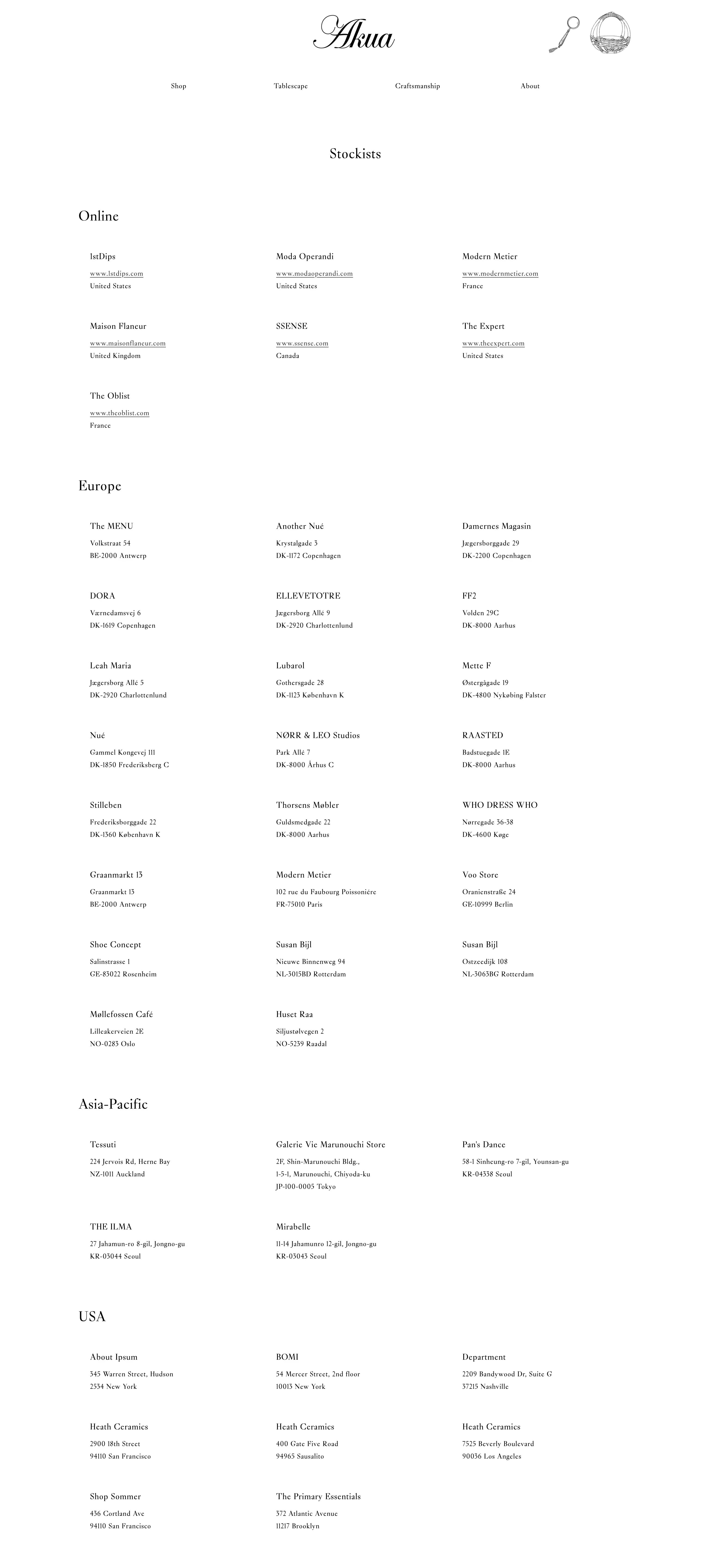
Uncrate Magazine takes an interesting approach with their stockists page, letting you know you can find their magazines in airport and hotel lounges. It’s simple and works for things that a store locator, which uses specific addresses, would not handle well.
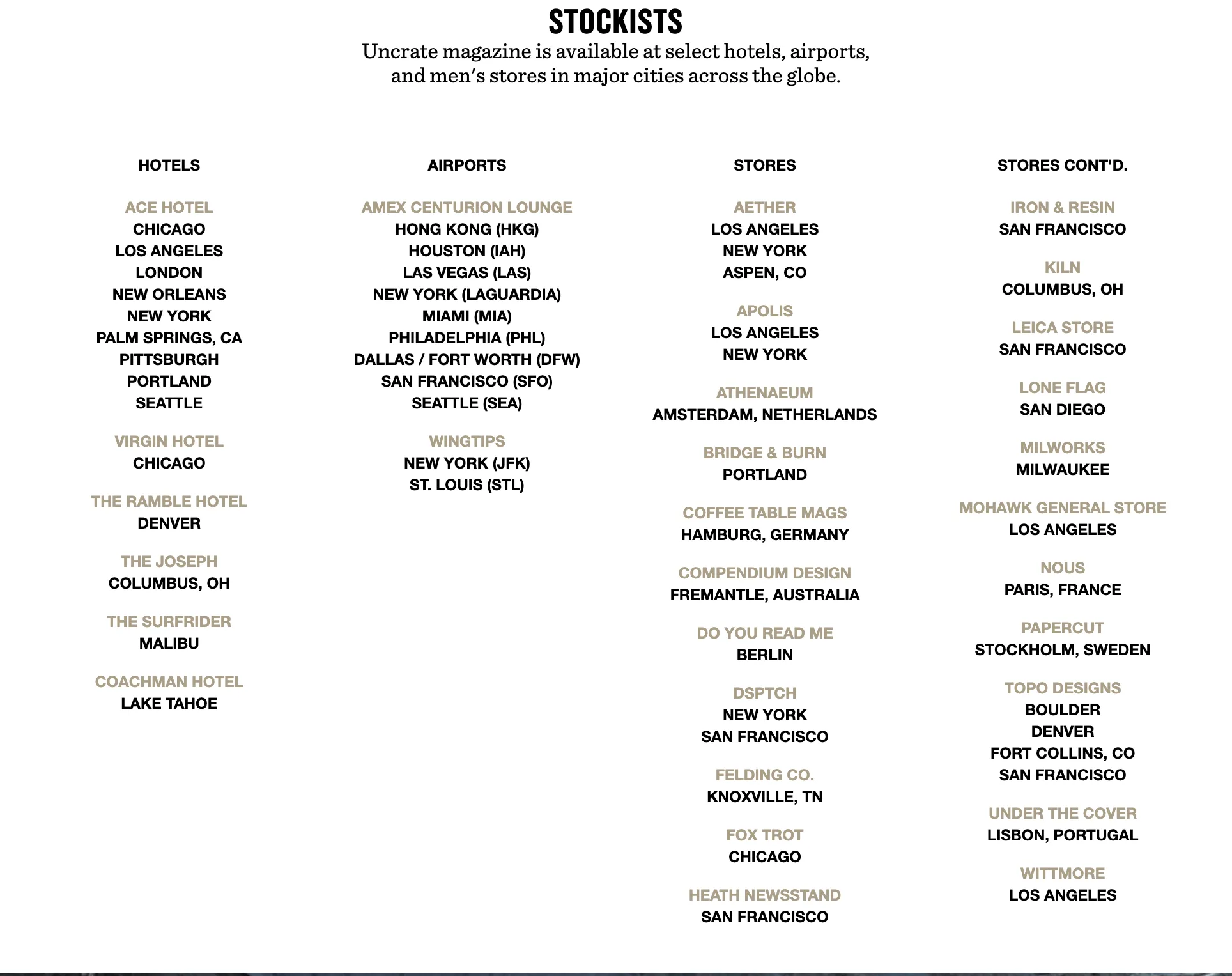
Portuguese Flannel organizes its stores page by continent. And only shows retailers on the continent you click on. It’s fast and scalable. As they add more retailers they just add to the specific continent’s list. This can easily support hundreds of retailers.
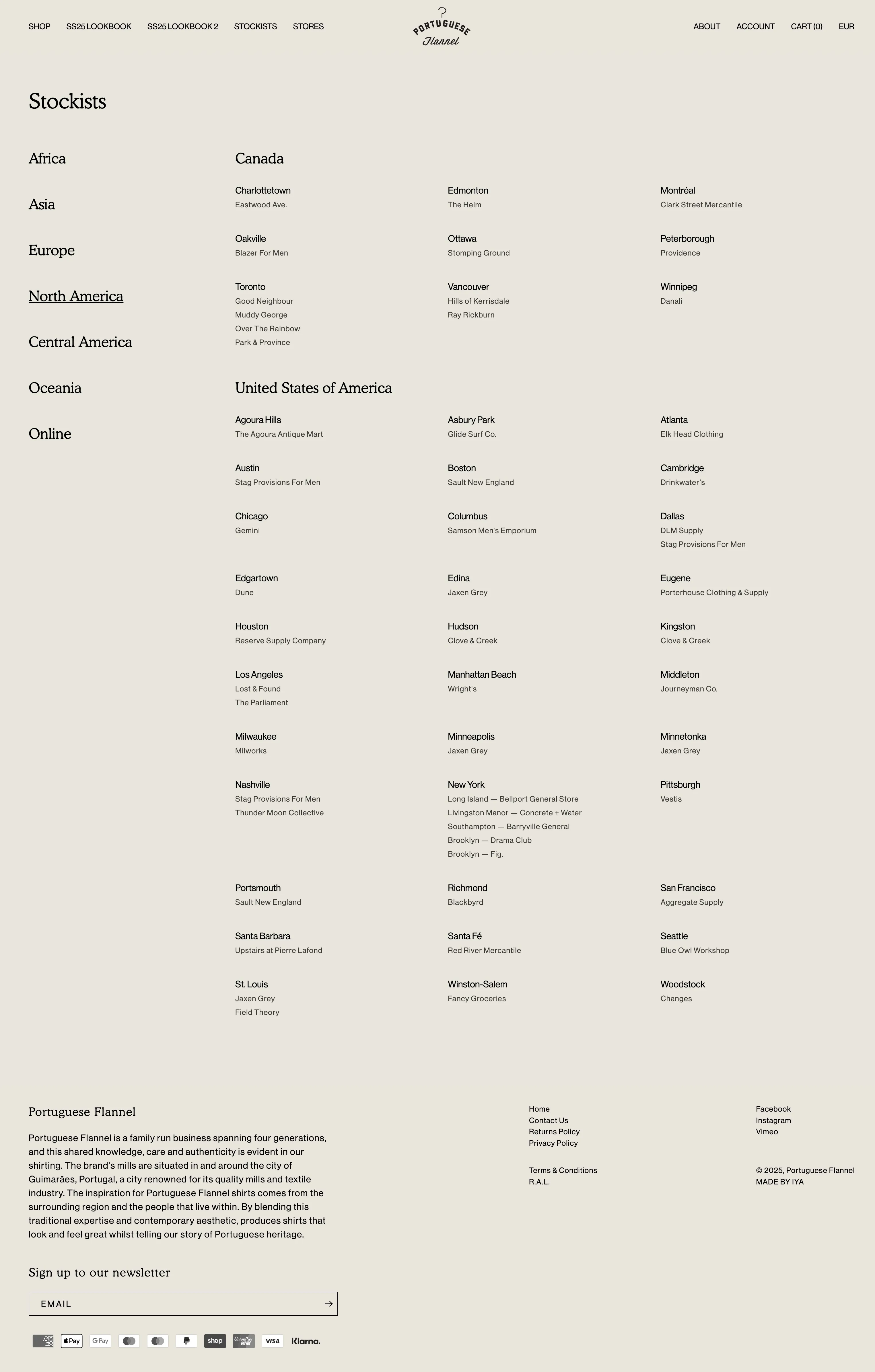
Provide essential information in an easy-to-navigate and read format. Store name, location, and contact details. Nothing more. It works.
Building Your Retailer Page in Square Online
Creating a good retailer page takes about an hour of focused work:
- Navigate to your Site Editor in your Square Online dashboard
- Add a new page using the + button and give it a clear name like “Where to Buy” or “Stockists”
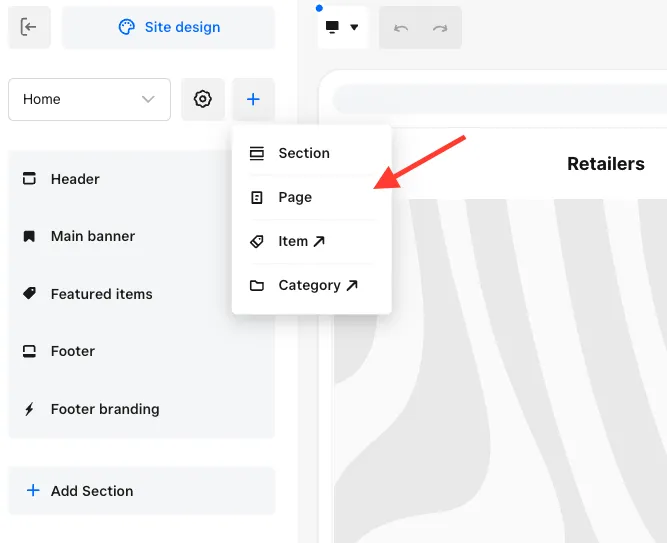
- Create your first section and add a text block for your first retailer
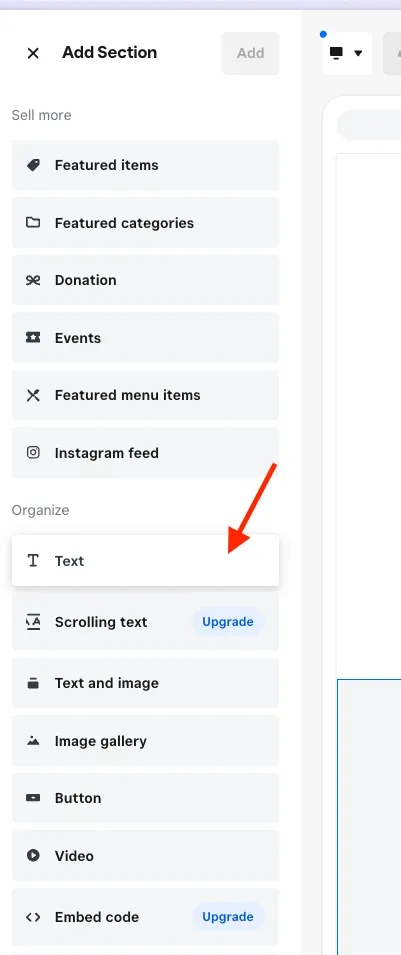
For each retailer, include:
- Store name
- Full address (this helps with local SEO too)
- Phone number
- Website or social media if relevant
- Brief note about what products they carry (if you have different product lines)
Time-saving tip: Build your first retailer entry completely, then use Square’s duplicate function to copy the formatting. You’ll only need to swap out the specific details for each additional location, maintaining consistent styling across your entire page.
Consider organizing by geographic region if you have retailers across multiple states or countries. This makes it easier for customers to find relevant locations quickly.
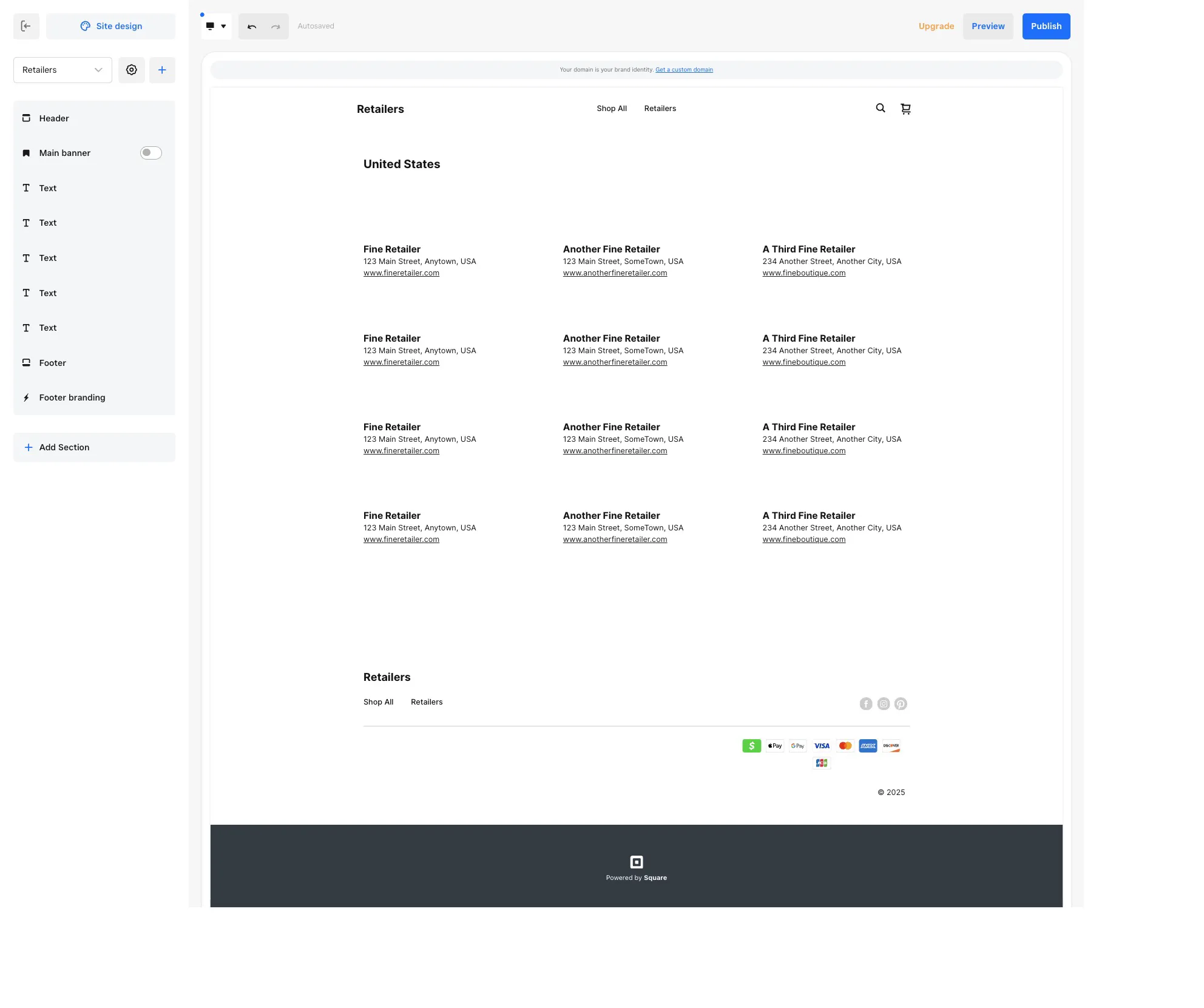
Keep it simple and elegant
The cost of every new tool is not just money but the time spent learning and maintaining it. The total cost of ownership (TCO). Some tools save you so much time or money, or help you make so much more money that they are worth it. Some tools look like they will help but either don’t or don’t do enough to justify their TCO. For most Square sellers who wholesale I think store mappers don’t justify their total costs.
A simple page on your website solves the problem of your customers finding your products. A scannable, well-organized page will also give you an elegant solution.